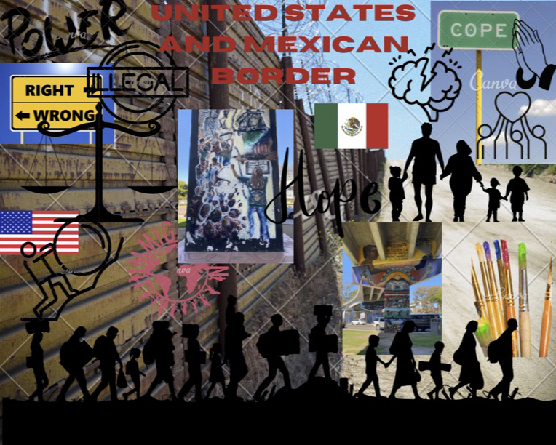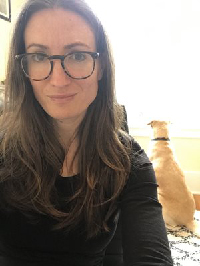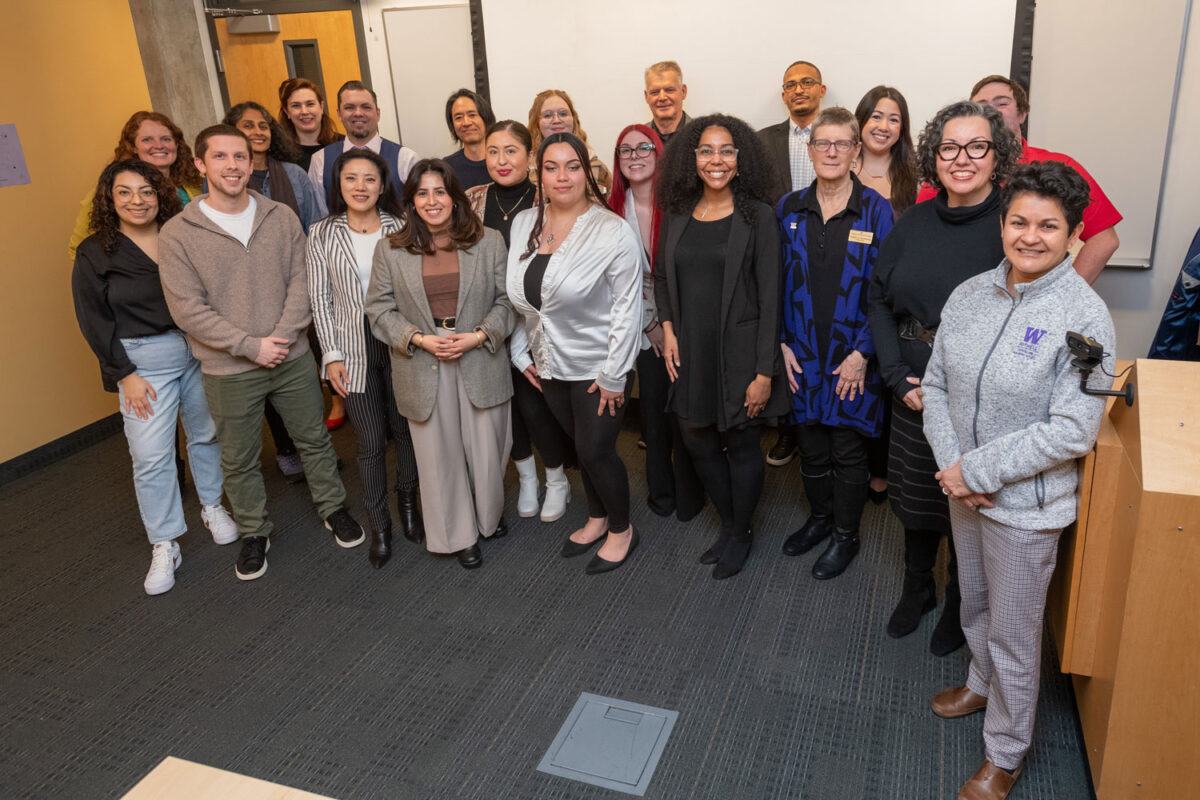
What new perspectives can be gained studying migration? How should we respond to the experiences of people from other cultures? What is the power of storytelling to deconstruct or create boundaries?
In the course Border Crossings: Stories of Cultural Encounter and Migration to the U.S., University of Washington Bothell students considered all these questions and more, learning to engage critically with concepts of foreignness, migration and borders both physical and intangible.
This autumn 2022 quarter course was the first Dr. Liz Janssen, professor in the School of Interdisciplinary Arts & Sciences, developed and taught for the Discovery Core, a collection of courses designed to orient first-year students to life in college and specifically to UW Bothell.
“I feel like this class attracted students who had personal experiences with border crossings, migration and immigration,” Janssen said. “We had perspectives from all over the world represented, which was just amazing.
“Every day in class, we practiced intracultural communication — the very thing being taught — just through the nature of the diversity of the students.”
Reading to think critically

To develop the students’ critical thinking skills, Janssen assigned short stories paired with works that provided historical context and works of philosophy and theory. Pairing texts together in this way, she said, optimized active reading and mindful engagement of new ideas. Students then discussed the readings with each other and, in doing so, learned how both to generate questions and to contribute in open, balanced and respectful ways.
“It’s not a given that when students come to college they know how to responsibly and critically engage with the ideas of others or with perspectives that are brand new — or that they know how to read challenging material,” Janssen said. “We spent a lot of time in the class not just discussing the readings and the ideas in them but also how to read or view or listen to texts that were complex and ideas that were challenging.”
For example, Janssen paired the story “No More Maybe” by Gish Jen with the essay “The Forgotten History of Purging the Chinese from America” by Michael Luo. The first is about present-day anti-Asian activity and the second looks at the history of anti-Asian racism and how it has affected immigration policy.
The students read “The Reluctant Fundamentalist,” a novel that mirrors Pakistani author Mohsin Hamid’s experiences after 9/11 and the subsequent rise of Islamophobia. They also watched “Documented,” a documentary by Filipino journalist Jose Antonio Vargas that features his journey to the United States and the hardships of being undocumented.
Another form of visual art included in the course was the “Migration Series” by Jacob Lawrence, through which the African American painter explores migration over national borders and the lasting impacts of forced diaspora. Janssen also assigned a companion piece: “Rethinking Immigration with Art” by Laura Perez. It helped students better understand how creativity can influence what people think of the immigrant experience and affect immigration policy.
Creative expressions of immigration
Group work is a core way to learn and collaborate in many classes at UW Bothell, and in this DCX course students worked together to develop four “creative narratives” as their final assignment.
They became both researchers and artists, Janssen noted, presenting their findings in a form of artistic expression such as storytelling, poetry and visual art.
One group of students took on the subject of approaching illegal immigration without violating human rights. They interviewed family members who migrated from Mexico about their experiences dealing with language barriers and trying to adapt to cultural differences. In the group’s classroom presentation, they proposed eliminating the use of the term “illegal,” fostering a culture that accepts diverse languages and creating more job opportunities.
Another group focused on racist acts toward Asian Americans and Pacific Islanders. They researched anti-Asian hate crimes as a result of the pandemic and the rise of xenophobia. In their presentation, they shared a short story of an Asian student in a predominately white school who experienced racism and ultimately found support from a classmate and faculty.
The third group explored asylum seekers and policies used against both legal and undocumented immigrants at the U.S.-Mexican border. They delved into Title 42, a clause of the 1944 Public Health Services Law that allows the government to prevent the introduction of individuals during certain public health emergencies and that was in full effect during the coronavirus pandemic. The group presented a collage of paintings showing the struggles of immigrants in wanting their voices to be heard, including a mural depicting Mexican farmers under a bridge to demonstrate that the farmworker experience isn’t visible to citizens.
Students in the fourth group scripted and recorded a round table-style podcast, in which they discussed the intersecting issues of climate change, migration, and displacement. Each group member brought a specific angle to the podcast conversation based on their research — incorporating specific experiences of climate refugees alongside historical contexts for climate migration and calls for policy change.
After discovering that each group member has immigrant parents, the fifth group decided to focus on how immigration can shape the lives of migrants’ children. They created both a short story and a visual work that brought together personal experiences and research, showing how their own experiences, while diverse, shared common ground.
The last student group chose the Asian diaspora as its subject — in part because four of the five students were migrants or are children of migrants from a Southeast Asian country. Their final creative narrative was a long poem incorporating the perspectives of Filipino, Indonesian, Malaysian and Vietnamese people.
A lasting impression
To help students form connections within the campus community — another goal of DCX courses — Janssen also included in the class an “explore our campus” exercise to help students become familiar with campus resources available to them based on their individual needs or interests.
“For some of them, it was as straightforward as going to the Academic Learning Commons when working on a paper for another class.”
For others, Janssen noted, learning about and participating in student clubs provided inspiration for deeper engagement on campus. Yearning for activities that are culturally specific, for example, some of the students are now exploring the formation of a Pakistani student club.
“It was super cool to see that they went beyond the assignment of learning about what UW Bothell has to offer to noticing things that were missing,” Janssen said. “Through the critical thinking skills they’d gained — and through their campus exploration — they were prompted to make change.
“At UW Bothell, we support that mindset. I am excited that as first-year students they have discovered the impact they can have on our campus community, regardless of their background.”



